#rangefinder-style
Explore tagged Tumblr posts
Text

Ueno Park
Leica M-A with 28mm f2.8 Elmarit-M and Kamerakaft grip
31 notes
·
View notes
Text
🎵 La Revacholiere
2. Of all the creatures I've met you are the kindest.
INSULINDIAN PHASMID - Thank you. I also have one more thing to say to you: that woman -- turn from the ruin. Turn and go forward. Do it for the working class.
I can't.
I will try.
I will.
What woman?
INSULINDIAN PHASMID - You cannot lie to me. Behind you it smells of fires. So awfully far you were prepared to go in her presence. End it.
2. I will try.
INSULINDIAN PHASMID - She was middle class. It doesn't take a three-metre stick insect to tell you that.
+5 XP
5. Disengage slowly. [Leave.]
INSULINDIAN PHASMID - As you're turning away, the phasmid mirrors your movements, stepping on the water -- the long limbs carry its feather weight without breaking its surface.
And just like that it's gone -- skating away across the sea's calm mirror like a skipping stone, leaving nothing but circles on the water...
PERCEPTION (SIGHT) [Easy: Success] - ...and something under it! In the place it stood, bobbing there, among the reeds. A collection of items.
KIM KITSURAGI - "It's gone..." The lieutenant looks north, with his hand raised to his brow.
"It can walk on water?"
"What's that -- in the reeds?"
"What now?" [Leave.]
KIM KITSURAGI - "Apparently, yes -- like a water strider, only..." He shakes his head with amazement. "I've never seen *anything* like that in my life."
2. "What's that -- in the reeds?"
KIM KITSURAGI - He squints. "Looks like a nest of some sort? We should have a look."
3. "What now?" [Leave.]
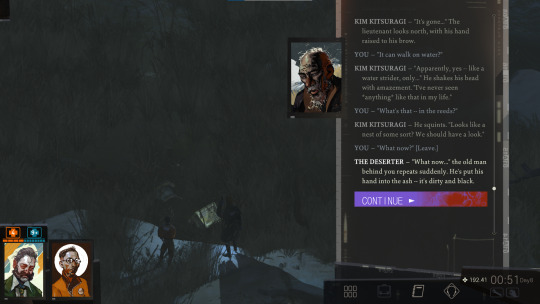
THE DESERTER - "What now..." the old man behind you repeats suddenly. He's put his hand into the ash -- it's dirty and black.
EMPATHY [Easy: Success] - In some kind of strange, semi-catatonic state.
KIM KITSURAGI - "Our suspect is not looking so good. We need to check on him."
🎵 None
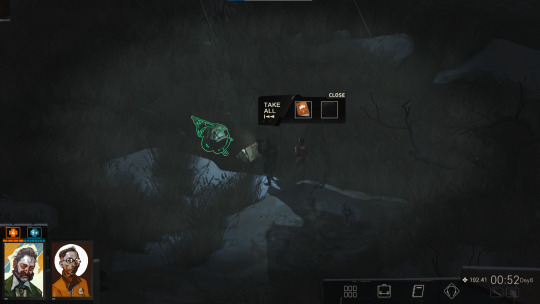
ITEM GAINED: (EVIDENCE) KLAASJE'S PASSPORT
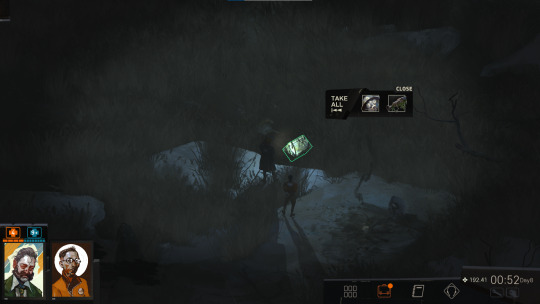
ITEM GAINED: T-9/32 RIFLE SCOPE
ITEM GAINED: FAIRWEATHER T-500 HELMET

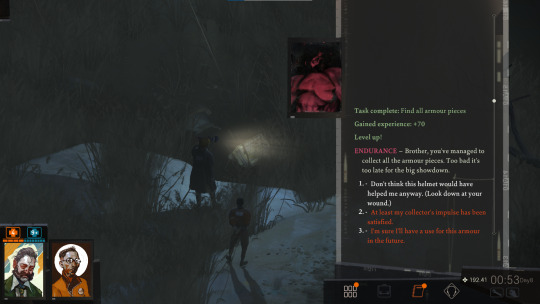
ENDURANCE - Brother, you've managed to collect all the armour pieces. Too bad it's too late for the big showdown.
Task complete: Find all armour pieces
+70 XP
Level up!
Don't think this helmet would have helped me anyway. (Look down at your wound.)
At least my collector's impulse has been satisfied.
I'm sure I'll have a use for this armour in the future.
PHYSICAL INSTRUMENT - It would have looked very impressive... Still. You found it all. Now your mortal coil is *completely* protected. Few cops are this futuristic.
At least now I am truly invincible. [Leave.]

FAIRWEATHER T-500 HELMET
+1 Half-Light: Head as a battering ram -1 Suggestion: A fighter, not a lover
This monstrous looking, bug-eyed ceramic helmet was in the phasmid's nest. It still has some reeds sticking out of it -- and it smells of seawater -- but it's otherwise wearable, if not exactly comfortable. Putting it on feels scary somehow...
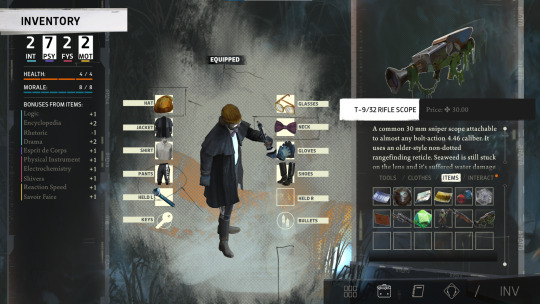
T-9/32 RIFLE SCOPE
A common 30mm sniper scope attachable to almost any bolt-action 4.46 caliber. It uses an older-style non-dotted rangefinding reticle. Seaweed is still stuck on the lens and it's suffered water damage from its time in the phasmid's dowry.
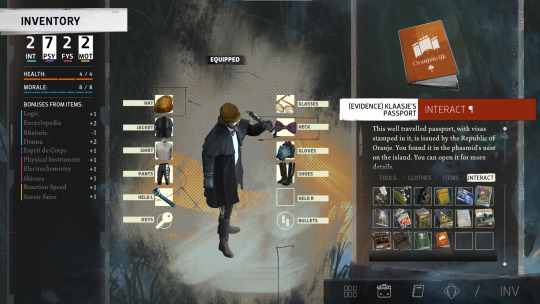
(EVIDENCE) KLAASJE'S PASSPORT
This well travelled passport, with visas stamped in it, is issued by the Republic of Oranje. You found it in the phasmid's nest on the island. You can open it for more details.
>INTERACT
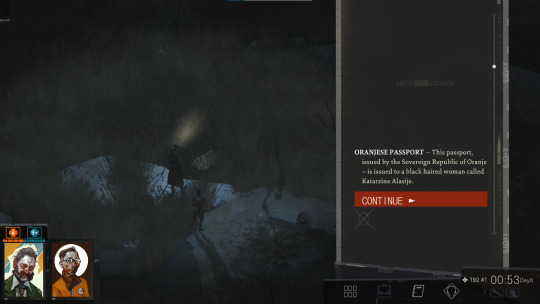
ORANJESE PASSPORT - This passport, issued by the Sovereign Republic of Oranje -- is issued to a black haired woman called Katarzine Alasije.
KIM KITSURAGI - "Klaasje's hidden documents..." The lieutenant looks at it in your hands. "From the empty buoy."
Look at the photo.
"What was this doing in the phasmid's nest?"
"It says -- Katarzine Alasije."
[Put the passport away.]
ORANJESE PASSPORT - It's Klaasje. With short, black hair and glasses. She looks boyish, younger somehow.
EMPATHY [Medium: Success] - An old photo. Before life came and did what it does.
2. "What was this doing in the phasmid's nest?"
KIM KITSURAGI - "Maybe our man, Mr. Dros, took it from Klaasje's -- or whatever her name was -- hiding place? Or..."
"Perhaps -- for some blackmailing plan?"
"I think the *phasmid* took it."
"The phasmid took it -- and I *sensed* it do so. I saw something open up the buoy with spindly legs." (Point to your head.)
KIM KITSURAGI - "Perhaps... But that still doesn't explain how it got into the nest."
2. "The phasmid took it -- and I *sensed* it do so. I saw something open up the buoy with spindly legs." (Point to your head.)
KIM KITSURAGI - "Like a magpie?" He looks around. "What a coincidence. Then it would also have *collected* the other objects, which would be highly unusual..."
RHETORIC [Easy: Success] - By now, the lieutenant has accepted your unusual methods.
KIM KITSURAGI - "I can see how the helmet could wash up on the island. And the scope -- maybe Mr. Dros lost it? But to seek this out would be *very* unusual behaviour for an arthropod."
EMPATHY [Medium: Success] - Would it? Maybe it was simply curious.
ENCYCLOPEDIA [Challenging: Success] - A curious octopus would do something similar. Or even a cuttlefish.
"Perhaps it was curious? Like an octopus?"
"Perhaps it had a vendetta against our Miss Oranje?"
KIM KITSURAGI - "An octopus belongs to a very different Class. It's not even an insect, it's a mollusc. But, yes -- I see your point."
3. "It says -- Katarzine Alasije."
KIM KITSURAGI - He opens his notes. "She said it would be for *Annouk Meijer-Smit*. Annouk -- Meijer -- Smit."
LOGIC [Medium: Success] - Katarzine Alasije was supposed to be her *real* name. Where *Klaasje* comes from, remember? God dammit!
VOLITION [Easy: Success] - I told you she kept lying to you. She's probably lying to someone else right now. In another city.
"Katarzine Alasije was supposed to be her real name. She lied to us."
"Maybe this is her real passport? Not a fake? Because this is her real name."
KIM KITSURAGI - "Yes, somehow she managed to lie to us -- *one more time*. In a way she's still lying to us right now." The lieutenant smiles.
+5 XP
4. "What's her *real* name then?"
KIM KITSURAGI - "I don't know. But it's not Katarzine Alasije. Or Klaasje. Or Annouk Meijer-Smit. We didn't even scratch the surface with her, detective."
He looks east. "Perhaps it's better that we didn't arrest her. Who knows what hell she'd be raising in my district by now..."
SHIVERS [Challenging: Success] - The winds are silent. The streets are empty of her. She is no longer in the city of Revachol.
5. [Put the passport away.]
🎵 Hope in Work and Joy in Leisure
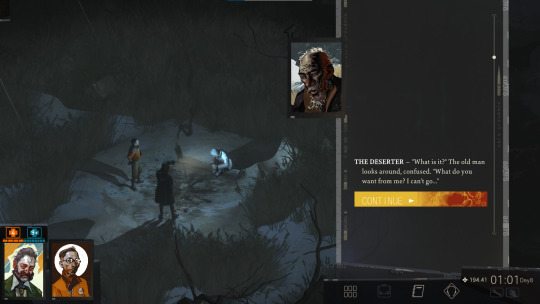
THE DESERTER - "What is it?" The old man looks around, confused. "What do you want from me? I can't go..."
COMPOSURE [Medium: Success] - Something is very wrong with him now.
"Sir, how could you not *see* the phasmid?"
"I'll leave you be for now." [Leave.]
THE DESERTER - "S-s-s-see..." He stares at the reeds and falls silent.
KIM KITSURAGI - "Mr. Dros?"
THE DESERTER - The man does not respond -- he keeps staring, black eyes glazed over and bulging from their sockets, his gap toothed mouth shaking.
EMPATHY [Medium: Success] - With fear and longing.
ELECTROCHEMISTRY [Medium: Success] - Like an addict of some terrible substance.
Snap your fingers under his nose.
Wave your hand in front of his eyes.
Touch his shoulder gently.
THE DESERTER - The plastic cape feels coarse. A light shiver passes the man -- other than that, no reaction. He feels small and frail.
KIM KITSURAGI - "He's going into some kind of... psycho-motor immobility." The lieutenant inspects him gently. "The good news is -- this solves our transportation problem. Doesn't it Mr. Dros?"
THE DESERTER - The trembling mouth appears to sigh.
KIM KITSURAGI - "Between this and the broken tyre he's used for a boat -- I think it's safe to leave him here, while we go and get help. It will need to be medical first, I'm afraid."
Task complete: Inspect the phasmid
+10 XP
"What has happened to this man?"
"We found some things in the phasmid's nest, Mr. Dros."
"Hang tight." [Leave.]
KIM KITSURAGI - "Old age and shock." He looks at him, then you.
"I think it's the *phasmid*."
"Old age and shock, yes."
KIM KITSURAGI - "Yes. The arrest and the appearance of the phasmid -- the combined stress..." He looks at you. "But you think it's something more than that, don't you?"
INLAND EMPIRE [Easy: Success] - There's *much* more. Remember what it said, when it spoke.
COMPOSURE [Medium: Success] - Quite a few things about that health check you did on him make sense now.
"He couldn't *see* it, Kim. It's just the reeds for him."
"Before -- when I evaluated his state -- he seemed strangely animated."
"I think he's addicted to that thing."
"It's definitely toxic -- the phasmid. It told me it is."
"He's been here for a long time. Who knows how much of it in its company?" (Conclude.)
KIM KITSURAGI - "That could be part of the shock. But you're right -- something is off here. Mr. Dros..." He touches the man's shoulder.
THE DESERTER - No response.
"Maybe this is how the phasmid has stayed hidden all these years?"
No. It's not that.
KIM KITSURAGI - "Then how did we see it?" He thinks. "Oh, you mean whatever does this, does it over *time*? Teenagers, kids, drunks -- sightings are brief. And hence not credible. But anyone who spends a long time with it..."
"Yes. You *forget* it's there."
KIM KITSURAGI - "Mhm." The lieutenant inspects the man. "Mr. Dros -- have you *ever* seen a stick insect, pretending to be the reeds?"
THE DESERTER - "Th-the..." The old man stutters.
KIM KITSURAGI - "The doctors will have to look at this. I hope your station has better medical personnel than 57. This is... a little advanced for a nurse."
2. "Before -- when I evaluated his state -- he seemed strangely animated."
KIM KITSURAGI - He nods. "He was energetic and articulate. After all these years alone, with little hygiene or medication I would expect worse."
"Perhaps this *animation* is induced by something in the phasmid?"
KIM KITSURAGI - "He does not seem to be *animated* now it's left..." He looks to the sea. "Honestly, I'm ready to believe anything at this point. Maybe it *is* psychoactive."
"I mean, why not? It's three metres tall…" He takes off his glasses and cleans them -- when he puts them back on he's still staring at the sea.
3. "I think he's addicted to that thing."
KIM KITSURAGI - "Like a drug?"
"He *has* displayed addict behaviour. And not *just* to painkillers."
KIM KITSURAGI - "His pupils appeared to be dilated. They still are..." He examines the catatonic man's eyes.
EMPATHY [Challenging: Success] - It's not just chemical.
"It's… as if he's infatuated with it."
No, it's not that.
KIM KITSURAGI - "Some kind of oxytocin release mechanism? Would go with the pupils. But this is way above me, detective."
+5 XP
4. "It's definitely toxic -- the phasmid. It told me it is."
KIM KITSURAGI - "Told you? Yes. Good. During your *long* staring match. I understand." He looks at the man, then you.
5. "He's been here for a long time. Who knows how much of it in its company?" (Conclude.)
KIM KITSURAGI - "He did seem distressed when it finally came to arresting him. Like he didn't want to leave this place. And the insect maybe..." He looks at his notebook.
"I have absolutely forgotten to take notes. I hope I remember all of this." He shakes his head in disbelief. "This will be one hell of a report -- thank *god* we have the photo."
DRAMA [Medium: Success] - No one would believe you without it.
2. "We found some things in the phasmid's nest, Mr. Dros."
THE DESERTER - He stares into the reeds. Your words don't stir anything in him. Perhaps you should...
Show him the ceramic helmet.
Show him the Oranjese passport.
Show him the detached scope.
"I'm going to let you rest now Mr. Dros." (Conclude.)
THE DESERTER - Nothing. Just dull staring -- not even rage left wherever he is.
HALF LIGHT [Medium: Success] - The last embers have gone out. The war is over.
KIM KITSURAGI - "If Cuno kicked it into the sea, as he said he did -- the ebb would pull it back here. This makes sense. Mr. Dros could have picked it up. Or... the phasmid, even? If it did, this is incredible..."
2. Show him the Oranjese passport.
THE DESERTER - No reaction. His breathing is slow and he appears very old all of a sudden. Around eighty.
COMPOSURE [Challenging: Success] - This is an old man -- at last. No longer a tin soldier, but the broken down remains of a man.
KIM KITSURAGI - "Did you take this passport and other papers from a buoy on the coast?"
THE DESERTER - He blinks and continues to stare at the reeds. "The... spirit."
KIM KITSURAGI - "He hears us... The spirit?"
THE DESERTER - No reply. He's gone again.
KIM KITSURAGI - "Try something else? We got him back for a moment."
3. Show him the detached scope.
THE DESERTER - "I..." He turns his eyes to it. "I lost..."
"You lost it, Mr. Dros?"
THE DESERTER - He turns his eyes to the reeds again -- as he's done so many times. Beige and white stripes...
KIM KITSURAGI - "He lost the scope. Then it somehow made its way over there. With the help of a magpie phasmid?" The lieutenant observes the lens sparkle in your hand.
"This sight is a T-9, Mr. Dros. Was it attached to the rifle, when you made the shot?"
THE DESERTER - Silence. Not even a sigh.
EMPATHY [Easy: Success] - You've gotten all you will out of this poor being.
4. "I'm going to let you rest now Mr. Dros." (Conclude.)
THE DESERTER - The plastic cape flaps around his face, in a gust of wind. His back is slouched and his mouth open.
PERCEPTION (SIGHT) [Challenging: Success] - The blacks of his eyes are receding, his pupils are returning to normal.
ENDURANCE [Medium: Success] - The strength has all gone out of him -- just frail old bones in a sack of tracksuit trousers and a wind breaker.
3. "Hang tight." [Leave.]
KIM KITSURAGI - "We should think about getting back to the mainland. To get help. He'll be safe here. If we don't take too long..."
+1 Reputation
New task: The Return
Gonna leave it there for today.
16 notes
·
View notes
Text
List of Different Types of Mandalorian Helmets&Armor and Facts:
* All Mandalorian Armor was made of Beskar, steel that cannot be harmed by blaster bolts or cut by lightsabers
* Some Mandalorians wore capes with their armor (Boba Fett and Pre Viszla)
* Some helmets had rangefinders attached (Boba Fett and Sabine Wren).
* Some Mandalorians had jetpacks, including Din Djarin and Boba Fett
* Weapons can also include Vanbraces (Such as Fenn Rau gives to Sabine Wren in Rebels)
* A specific weapon to note is Whistling Birds, given to Mando by the Armorer
* Another weapon to note is the Beskar Spear from the Mandalorian.
* The Darksaber goes without stating as THE weapon of Mandalorian culture.
* Mandalorian Hunter
* Classic Mandalorian Helmet Style (T-Visor)
- Boba Fett
- Din Djarin (the Mandalorian)
- Jango Fett
* Death Watch Mandalorian (Clone Wars Era)
* Mandalorian Stalker
* Mandalorian Crusaders
* Neo Crusaders
- organic, jagged form armor
* Mandalorian Executioner
* Mandalorian Elite
* Power tech Mandalorian
* Protectors of Concord Dawn
- Fenn Rau
* Children of the Watch (Death Watch)
- Din Djarin (the Mandalorian)
- The Armorer
- Paz Vizsla
- Ragnar
- Din Grogu
* Imperial Supercommandos
- not made of Beskar due to the weapon known as the “Duchess” created by Sabine Wren, which targets the Beskar armor
- White armor
* Nite Owl Style helmet:
- Bo-Katan Kryze
- Koska Reeves
- Axe Woves
- Sabine Wren (hand me down)
* Nite Owls:
- Bo-Katan Kryze
- Koska Reeves
- Axe Woves
- Ursa Wren
* Pilot Mandalorian
* Assassin Mandalorian
* Modern Mandalorian
* Heavy Infantry Mandalorian:
- Paz Vizsla
* Mandalorian Shock Trooper
* New Mandalorian Guard
- Clone Wars era, under Satine Kryze
* Mandalorian Royal Guard
- Clone Wars Era, serve Satine Kryze
* Custom helmet designs:
- Pre Viszla
- The Armorer
- Fenn Rau
- Moff Gideon
* Imperial allegiances:
- Saxon Clan including Gar and Tiber Saxon
- Moff Gideon wore Mandalorian armor but wasn’t Mandalorian
Attributes of Mandalorian Armor used in other types of armor include:
- Clone Armor
- Imperial Stormtrooper Armor
- First Order Trooper Armor
- The Emperors Royal Guard Armor
- ARC Trooper Armor
- Praetorian Guard Armor
Mandalorians that wore Kama’s:
- Goran Beviin
- Fi Skirata
- Isabet Reau
Clone Troopers also wore Kama’s sometimes, including Captain Rex.
#mandalorian#the mandalorian#mandalorian armor#starwars#tv shows#disney plus#disney#star wars#tv series
16 notes
·
View notes
Text
I think im interested in the form factor of a rangefinder style camera as opposed to the more slr style but if I can get this bundle deal on the em10ii for 300 or less im gonna do that because that would be a fuckin steal imo
The bid doesn't end til Thursday and I don't like my chances but I'm gonna try for it
If I can't I will look for a good deal on a pen e-p5
The e-p5 is a couple years older than the 10mkii but I rly like how it looks lol
The 10mkii looks good too but idk I lol
2 notes
·
View notes
Text
Canon Demi camera
I've never really been a big fan of Canon cameras, as I've always been a Nikon person. In my opinion, Canon cameras weren't well-made, especially in the 1960s, when this camera was manufactured. Their line of early rangefinder cameras has nice optics and is comfortable to shoot with, but I just prefer the Nikon line.
One of my frustrations with Canon was working in a camera store during the 1970s, when the unbelievably popular Canon AE-1 was introduced. For over a year, the camera was the top seller in our chain of stores as we couldn't keep them in stock, and people absolutely loved it. Personally, I think that Canon held back production on the camera to add to the mystique of having a camera "hard to get", which added to the popularity of the camera. Daily, we had so many questions about that camera. Today, I could do a demo on the camera with my eyes closed.
I don't remember the exact year I purchased the Canon Demi camera, but I know I've had it for several years. My guess is it's been about 8-9 years. I do remember, I purchased the Canon Demi camera at a flea market, mainly because the camera was red, and I'm a sucker for colored cameras. Checking out the camera at the time, it had the original red camera case, and the person who sold it to me said the camera's meter wasn't working.
Having had many cameras with a selenium cell light meter, they tended only to last around 20 years or so until the selenium cell loses the ability to read light and work in cameras. I wasn't worried about that at the time of purchase, as the primary motivation to purchase the camera was that it was red and had a red case.
The Canon Demi was introduced in February 1963. The camera has a sleek and modern design from this expressive period. The camera has rounded corners and a straightforward point-and-shoot viewfinder with a zone focus system. It wasn't made to be a professional camera with built-in focus capabilities, but for the family and photo hobbyist. A selenium match needle metering system was easy to operate, keeping costs down for the consumer. By the end of 1963, the Canon Demi came in four colors: traditional, black, white, blue, and red. These colors didn't last long and were quickly discontinued.
Another advantage of the Canon Demi was that it was Canon's first half-frame camera, introduced four years after the Olympus Pen camera in 1959. Rolls of film at that time had either 20 or 36 exposures, so shooting 40 or 72 photos on a roll of film was excellent and considerably less expensive for the family to use.
In September 1964, Canon introduced the improved Demi S, which had a 30mm f/1.7 lens and an improved metering system.
In April 1965, the Demi C, with interchangeable lenses, was introduced. You had the standard 28mm f/2.8, and a 50mm f/2.8 was available for the camera.
The Demi Rapid, with a rapid loading system, battery-operated CD meter, and self-timer, was released in June 1965.
May 1966 saw the release of the very popular and top-of-the-line Canon Demi EE17. This camera was the same as the Demi Rapid without the rapid loading system.
In April 1967, Canon returned to the original style with the Demi EE28, back to the Selenium cell metering system, and a 28mm f/2.8 lens. In four years, Canon introduced five different models of the same camera, which were very similar to what the auto industry was doing then.
History:
Canon Inc., a large Japanese multinational corporation, has played a significant part in the evolution of camera technology. The company's journey in the camera industry began in the 1930s and has since developed into one of the most recognized names in photography worldwide.
Canon's first camera, the Kwanon, was developed in 1934 by a small team of Japanese engineers. It was Japan's first 35mm focal-plane shutter camera named after the Buddhist goddess of mercy. Although it was never mass-produced, it laid the foundation for Canon's future success. In 1935, the company adopted the name Canon, signifying precision and excellence.
During the 1940s and 1950s, Canon focused on refining its rangefinder cameras. The Canon II, released in 1946, helped the brand establish itself as a competitor to German camera makers like Leica. In the 1950s, Canon began to diversify its product line. By 1959, it introduced the Canonflex, its first single-lens reflex (SLR) camera—this marked Canon's entry into a growing market that prized versatility and interchangeable lenses.
The 1970s and 1980s were transformative decades. In 1971, Canon launched the F-1, a professional-grade SLR that rivaled Nikon's offerings. Later, in 1976, the company released the AE-1, one of the world's first cameras with a built-in microprocessor. The AE-1 was affordable, reliable, and popular with amateur photographers, helping Canon grow its user base significantly.
In 1987, Canon introduced the EOS (Electro-Optical System) line, beginning with the EOS 650. This groundbreaking autofocus SLR system used a fully electronic lens mount and paved the way for future innovation. The EOS series would become one of history's most successful camera lines.
Canon embraced digital technology in the 1990s and 2000s. The release of the EOS D30 in 2000 marked Canon's serious move into digital SLRs. This transition peaked with iconic models like the EOS 5D series, which brought full-frame digital photography to a broader market.
In the 2010s and 2020s, Canon adapted to mirrorless technology, introducing the EOS R system in 2018. This full-frame mirrorless platform represents the company's latest push to stay at the forefront of imaging technology.
Today, Canon continues to be a leader in photography, producing a wide range of cameras that cater to everyone from beginners to professionals, while also advancing imaging technology across multiple industries.
My Camera:
My Canon Demi camera is 4.5" wide by 2.75" tall and only 1.5" deep, including the compact 28mm f2.8 lens. It weighs 14.4 oz and is not adorned with frills, bells, or whistles. It's a very typical 35mm camera with a zone focus system and shutter speeds ranging from 1/250 to 1/30. The aperture settings range from F/2.8 to F/22.
The zone focus is set by moving the lens to either a mountain for infinity, three people for a group, or one person for a portrait, and these symbols are set around the lens.
The camera uses a match needle system. You point the camera at your subject, and when you turn the dial around the outer ring of the lens, the shutter speed and aperture are set to the ASA/ISO you set within the exposure ring.
The back door latch is on the left side of the camera, which unlocks and opens the film door to load film into it. Drop the 35mm cassette into the camera's left side and bring the leader to the take-up spool. Slide the end of the film leader into the slot on the take-up spool. Make sure the film sprockets are on the back drive gear.
One thing I do to make sure the film is moving in the camera is take up the slack by winding the rewind knob a few turns to take uo the slack in the film cassette. That way when you close the back of the camera and wind the camera to get it to the first frame, watch the rewind knob turn so you know the film is advancing in the camera. Checking the rewind knob is a good thing to do with any 35mm camera. I can't tell you how many times I've seen where people think the film is advancing, but the film wasn't loaded correctly, and no images were ever recorded on the film.
Once you've taken all the photos on your roll of film, press the button on the bottom of the camera. This releases the winding gear inside the camera so you can easily rewind the film back into the film cassette. If you don't press the rewind button, you'll tear all the film sprockets on the roll of film, making the process more difficult. After the film is rewound into the film cassette, open the back and load a new roll of film.
My Results:
I took this camera on my trip to Barcelona this week, partly because I had a roll of older Plus-X film with 20 exposures, and the second reason was the camera's shutter works, but the meter doesn't. I wanted to experiment with some of the exposures to see if I could get exposures on the roll of film. It probably wasn't the best idea to try a 40-50-year-old roll of film under these circumstances, but I wanted to write about the camera and didn't want to shoot 72 exposures to get bad results.
The results turned out pretty well, and the camera meter is in decent condition, as many of the images turned out pretty well. However, the film is pretty grainy for being ASA 125. Nonetheless, here are a few photos from walking around one of the main shopping areas in Barcelona.
Conclusion:
My expectations for the camera weren't high, so I was pleasantly surprised by its relatively easy-to-use nature. Basic focus and a match needle meter make this compact camera very fun and easy to use.
If you enjoy vintage manual cameras, this is one to put in your coat pocket or hang around your neck. It gets twice as many photos from a roll of film and records memories for the photo albums. It is another excellent camera to use on a daily basis.
Thank you for taking a few minutes to read about this fantastic, compact half-frame camera. A faster lens would have been nice, but it's unnecessary under most circumstances.
I also sell cameras on eBay under Cuny's Cameras and Photos. Take a look, and you may see something you are interested in or a camera or two that piques your interest.
Click on the link to read about some of the other cameras reviewed.
Until next week, please be safe.
#Camera#camera collecting#Camera for fun#Camera from the 1960s#camera from Japan#japan#Japan#japanese camera#made in japan#cameras from japan#Canon#Canon Camera#Canon Demi Camera#Canon film camera#Canon half frame camera#half frame camera#film#Film#film camera#film camera collector#film camera collectors#film in camera#film shooter#film photography#film cassettes#fun with film#film in old camera#35mm#35mm cassette#35mm camera
0 notes
Text
Accessorizing for a golf match: What you need in your gear
While sport outfits are evolving at a blazing speed, the accessories haven’t been left behind. Most brands now manufacture these add-ons in a way that they can help the person wearing them to put on a cohesive look. So, whether it’s the golf hats online or the shoes, you can now match these elements with your fashionable outfit. It’s time to bid an imbalanced look farewell!

However, most people get confused about preparing the right gear for their golf matches. As a result, they either end up making the wrong choices or fall short of a couple of important items. So, to help them out, we have prepared a detailed guide below. Here, we will explain what things you need to include in your sports gear for a worry-free golf match.
Rangefinders
Accuracy is all that matters in a strategic game like golf. So, you need to put a rangefinder in your gear kit first. Most models nowadays come with a laser tip that will help you measure the distance to the tip or any hazard on the course with maximum precision. Some products can also come with a brilliant feature, namely slope adjustment technology. This has proven to be extremely helpful in giving players a tactical edge in competitive games.
Gloves
If you continue holding the tees with your bare hands, expect to suffer from blisters, scratches, and other problems. Besides, once your palms get sweaty, you won’t have a proper grip. That’s why getting a pair of premium-grade golf gloves is necessary. Ensure the product is durable enough to withstand constant wear and tear. Also, the fabric needs to be breathable to keep your skin free from sweat and allergies.
Shoes with spikes
Always buy golf shoes for men from reputable brands so that your movements and agility aren’t compromised. The right footwear can either make or break the game. So, pay attention to this gear properly without leaving room for compromises. If you are likely to spend most of the time on the turf, go for a spiked shoe. It will help you move freely without damaging the delicate turf. Cushioned insoles will provide the best comfort you need to keep muscle aches at bay after walking and playing for hours.
Hats and caps
Most golf hats online are made with UV-resistant material to prevent the solar rays from damaging your skin and hair. You can either go with a cap having a visor to protect your eyes from the glaring sun rays or a hat with a sheer fabric hanging from the edges. Regardless of what you choose, ensure it’s comfortable and doesn’t hinder your vision.
Sunglasses
Besides wearing the hat or the cap, you would also need a pair of sunglasses, especially on sunny days. These will protect your eyes from the irritating solar glare when you have to look up to check if the ball is moving in the right direction. Besides, wearing a pair of polarized sunglasses will help you measure the depth accurately and take the perfect swing.
Golf tees
You cannot play the game without the full set of golf tees. These are available in three material options, namely plastic, metal, or wood. Each will come with a distinct set of benefits and hiccups. So, go through them thoroughly to decide which material will be perfect for your golf playing style. Additionally, choose the tees according to the weather conditions you often experience on the golf course.
Conclusion
Whether you want to buygolf hats onlineor shoes, be wise in your decision. Do not invest your money in something cheaper and of poor build quality. Also, prepare a list of the accessories you will need beforehand. This way, you can buy everything at once and plan for your next match smoothly.
0 notes
Text
Fujifilm's X-E5, New Bose Speakers, and Qualcomm's Smart Glasses Chip—Your Gear News of the Week
Fujifilm announced a new camera this week, the X-E5, the latest in its X-E rangefinder-style mirrorless camera series. Think of the X-E as an interchangeable lens version of the X100. The big news in the X-E5 is Fujifilm’s latest 40-megapixel APS-C sensor and 7-stop in-body image stabilization (IBIS). This is the first X-E series camera with IBIS, which Fujifilm says will gain you about 7 stops…
0 notes
Text
Fujifilm's X-E5, New Bose Audio system, and Qualcomm's Good Glasses Chip—Your Gear Information of the Week
Fujifilm introduced a new digicam this week, the X-E5, the most recent in its X-E rangefinder-style mirrorless digicam sequence. Consider the X-E as an interchangeable lens model of the X100. The massive information within the X-E5 is Fujifilm’s newest 40-megapixel APS-C sensor and 7-stop in-body picture stabilization (IBIS). That is the primary X-E sequence digicam with IBIS, which Fujifilm says…
0 notes
Text
Retro-Style Fujifilm X Half is Half the Frame, Twice the Fun!
Are you ready for a camera that combines nostalgia and next-generation innovation? Meet the Fujifilm X Half, a retro-designed half-frame camera that is gaining the hearts of old-school hobbyists and social content creators. With its retro film-era look and smart digital twist, this miniature mirrorless gem is proof that less frame can be more fun.
What is a Half-Frame Camera?
A half-frame camera captures two vertical shots on one standard 35mm frame — twice as many pictures as you can shoot, literally. Fujifilm X Half does the same aesthetic in digital, and you can take more moments, tell more stories, and create scroll-stopping content for social media.
Fujifilm X Half Key Features:
Timeless Rangefinder Design: Drawing from classic Fujifilm designs with modern modifications
Dual-Image Format: Works best for side-by-side story, collages, or cinema reels
More Detailed Film Simulations: Incorporate richer film appearances with in-camera Fujifilm color profiles such as Classic Chrome, Provia, and Acros
Lightweight & Portable: Ideal for everyday street photography or travel vlogging
Social-Ready Content: Half-frames vertical are perfect for Instagram, TikTok & Reels!
Why Creators Love It ?
With fast content, Fujifilm X Half delivers double the creative output. Whether you are a street photographer, content creator, or movie buff, this camera enables you to shoot double the frames without sacrificing style or quality. Its distinctive narrative format is also perfect for before-and-after shots, photo diaries, or mood boards.
Where to Buy?
The Fujifilm X Half can be found on major websites such as Amazon, Photo, and the Fujifilm homepage. Hurry—this camera is quickly becoming a collector's gem!
Conclusion:
The Fujifilm X Half shows that good things do indeed come in small, retro-styled packages. With twice the frames, artistry control, and social-ready looks, it's not just a camera — it's a creative friend. > Freeze moments the old-fashioned way. Twice the story in one frame.
Read more: https://oragetechnologies.com/fujifilm-x-half/
0 notes
Text
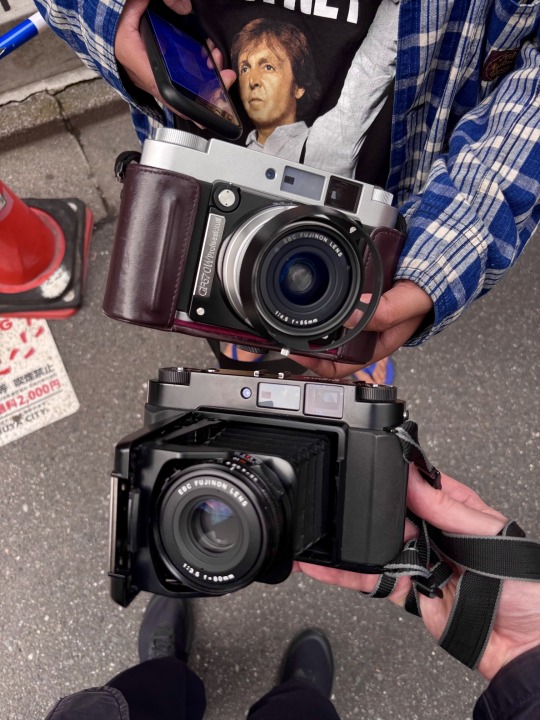
Harajuku
Fujifilm GF670W
Fujifilm GF670
22 notes
·
View notes
Text
Canon AV-1: Classic Camera Review
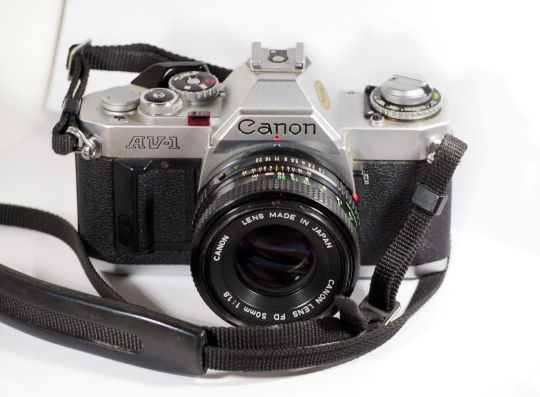
The Canon AV-1 is a 35mm film SLR that was first released in 1979. While it closely resembles its famed older sibling, the 1976 AE-1, the AV-1 utilizes aperture priority instead of shutter priority and lacks full manual control. Although the AV-1 isn't as well-known and doesn't have the manual exposure options of the AE-1, its lower visibility can lead to great deals on auction sites and in the used camera market.
In this classic camera review, we will explore the history of the AV-1, its strengths and weaknesses, and provide you with the information you need to decide if this camera is right for you.
A Brief History
Seiki Kogaku, which later became Canon, began developing rangefinder cameras in 1933 with the Kwanon prototype, inspired by the Leica II 35mm camera. In late 1946, they released the SII, which introduced a combined viewfinder and rangefinder system, departing from the Leica design while retaining a similar look to the Leica III.
In 1956, Canon moved away from the Leica II style and adopted a more contemporary design. The Canon VT, introduced that year, was the first Canon camera with a swing-open back for easy film loading, although it still used the Leica lens mount.
From 1961 to 1976, Canon partnered with Bell & Howell, with several Canon products sold in the U.S. under the Bell & Howell brand, including the Canon 7 Rangefinder, Canon EX-EE, and Canon TX.
In 1959, Canon developed the Canon R lens mount for SLR cameras and released their first SLR camera in the same year. This was followed by the introduction of the Canon FL lens mount in 1964. In 1971, the FD lens mount standard was introduced with the highly successful Canon F-1.
Canon's success continued throughout the 1970s with numerous popular camera releases, including the AE series and the AV-1 in 1979. Following the FD mount, Canon launched the EOS series in 1987, bringing autofocus capabilities to their later film cameras and DSLRs.
Type
35mm focal-plane shutter SLR camera
Picture Size
24 x 36 mm
Kit Lens
Canon New FD 50mm f/1.8, New FD 50mm f/2 (Quick mount/demount type)
Lens Mount
FD mount
Shutter
Bulb, 2, 1, 1/2, 1/4, 1/8, 1/15, 1/30, 1/60, 1/125, 1/250, 1/500, 1/1000 sec. All speeds stepless and controlled electronically. Built-in self-timer (with adjustable delay and blinking LED).
Flash Sync
X-sync hot shoe.
Viewfinder
Fixed eye-level viewfinder. 0.87x magnification, 92% vertical coverage, 93% horizontal coverage. Split-image rangefinder focus screen. Exposure meter needle, shutter speed scale, overexposure and underexposure warnings, battery check index and camera-shake warning, and Flash-ready indicator.
Metering &
Exposure Control
Aperture priority. Metering range at ISO 100 and f/1.4: EV 1 – 18. Film speed range from ISO 25 to 1600.
Power Source
One 4G-13 6 V mercury oxide battery or 4LR44 alkaline battery
Film Loading &
Advance
Slotted take-up spool. Advances with camera-top lever’s 120 stroke (partial strokes enabled). Ready position at 30.
Frame Counter
Counts up. Resets automatically when camera back is opened.
Film Rewind
Camera-top crank
Dimensions &
Weight
139 x 85 x 48 mm, 490 g
Aesthetics and Build Quality

The AV-1 features a classic design, equipped with all the characteristics a film newbie would enjoy, This exemplified by its large dials and a chrome body. The AV-1 fits in well with any popular SLR from the 70's or 80's.
Constructed with a combination of metal and plastic, it feels solid and durable for an entry-level camera. The majority of the exterior is made from sturdy plastic, which is typical for cameras of its class. However, Canon cameras from this era are not weather-sealed, so users should avoid using them in rainy conditions.
While the AV-1 may not feel as refined or luxurious as higher-end cameras of its time, it remains pleasant to shoot with. It has a comparable feel to Olympus models like the OM-10 or OM-20, performing well alongside its contemporary consumer SLRs.
Lens Selection
The FD mount, developed by Canon in March 1971, served as the standard for interchangeable lenses in Canon SLR cameras until the EOS series was introduced in 1987. The FD mount remained in use through the release of the Canon T60 in 1990, marking the end of the FD system.
During its 21-year production run, Canon introduced 134 different FD lenses, ranging from 7.5mm to 1,200mm across seventeen fixed focal lengths and nineteen zoom ranges, making it one of the most extensive manual focus lens systems ever produced.
This makes the system very attractive to 35mm film photographers who are looking for the high optical quality, while not needing auto focus capability.
Sample photos: Click Here
Layout and Controls

With user-friendly controls, Canon's AV-1 is perfect for people new to photography or those looking for an easy-to-use camera that retains some aesthetic control with the use of its aperture priority shooting mode.
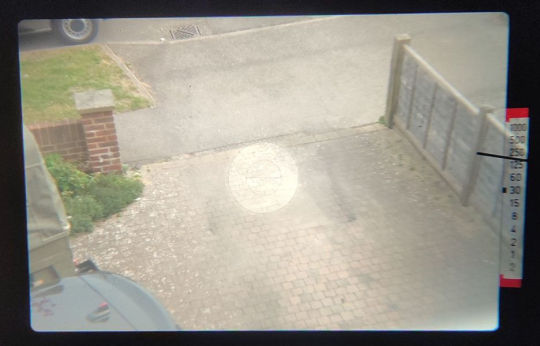
Looking through the viewfinder, the shutter speed is indicated by a needle that moves as you adjust the aperture. Focusing is performed using a split prism, and all primary controls are conveniently located on the lens, making the shooting experience straightforward and easy to grasp quickly.
There is a fully automatic mode, but I found the 30th of a second shutter speed used a little slow for impromptu photos.
If you are familiar with other aperture priority cameras, such as the OM series (other than the OM-1), the Pentax MV-1, Yashica Electro 35, Chinon CA-4, then you will feel at home with the AV-1.
Click here for a full tutorial of the Canon AV-1
Reliability
The AV-1 is generally regarded as a reliable camera, thanks to the solid construction typical of Canon cameras from this era, making it well-suited for regular use. However, like any older camera, its reliability depends on its condition. Models that have been well-maintained or serviced recently are likely to perform to a higher standard than models that have been left unused for long periods of time.
If your AV-1 does encounter problems, there are plenty of online guides and user manuals that can assist with repairs. Given Canon’s popularity, finding replacement parts shouldn't be difficult. It's worth noting that due to the camera's affordability, purchasing a whole new body may make more financial sense than paying for repairs, which can lead to waste, especially when the camera isn't especially rare or sought-after.
Most cameras of the AV-1's age would benefit from a CLA (Clean, Lubricate, Adjust), but with a bit of care and regular use, they can remain reliable for many years.
Price
You can typically find a working Canon AV-1 for around £60-£100, depending on its condition and any included lenses. It's advisable to aim for the lower end of that range since there are more appealing options available around the £100 mark.
When shopping online, ensure you only purchase from highly-rated sellers on platforms like eBay, or consider buying from a reputable used camera shop that offers a warranty.
Before committing to an AV-1, consider exploring other cameras within a similar price range. For £50 to £100, you might also come across options like the Olympus OM-20, the Canon AE-1, Nikon EM, or Pentax K1000, which provide manual controls.
Conclusion
In conclusion, the Canon AV-1 is a great option for people stepping into the world of film photography. With a wide range of sharp and affordable lenses, and user-friendly controls, you can't go wrong with the AV-1 or any of its Canon relatives of the same era.
Be sure to shop around and compare options to find a camera that fits your needs. If you're just starting out, automatic shooting modes may appeal to you, but a camera offering manual settings can provide more room for growth in the future.
0 notes
Text
About a decade ago ago, I made a dumb decision and succumbed to a near-fatal case of GAS (Gear Acquisition Syndrome). I dropped for a Nikon D800 that I neither needed for my general work, which was street and documentary, nor had any specific other purpose for. Along with that, I spent a s**t-ton of money on some great Nikon glass. Almost immediately I suffered buyers’ remorse. My camera backpack weighed about 8kg.
But then one day, an epiphany. I looked at my sad, under-employed face in the mirror, and said, ‘Enough already! Sell it all and downsize!’. Of course, I lost money on the resell, and hated myself even more for a while, until I picked up the first camera I ever really actually loved to use. That would be the first iteration of the the Fuji X100. I dropped from an 8kg backpack to fixed lens ‘toy’ that would nearly fit in my pocket. I also downsized from 36mp to 12mp in that move.
This little camera taught me two things. Firstly, that size matters, in the reverse way. And secondly- and this is obvious- what mattered to me was the subject of the images, and not how they were obtained, and much less their megapixel count. Of course, horses for courses here. You need a more substantial piece of kit for professional studio/commercial work, as well as the flexibility of an interchangeable lens set-up if you’re to make a living from photography as a nobody. If you don’t have an established schtick that depends on one focal length ‘look’, then you need to be versatile.
For the first story in the magazine I wrote a naively pretentious essay about the photographic muse, using the history of Edward Weston’s bevy of young women to illustrate the point that they probably helped his career more than he’d have cared to admit. Leaving his wife to embark on a succession of affairs with women whose talent, in my opinion rivalled his own, introduced him to new places, techniques and even a world of political intrigue, embodied in the subsequent work of Tina Modotti. The story was illustrated with some of my own images about which I’ll say nothing further.
My second FujiLove publication was born out of a creative funk that led me to really not shoot much at all for a year or so. Several years prior, I’d begun shooting little out-takes of life in the tiny alleys which form the sociocultural ‘glue’ of Saigon, the largest city in Vietnam. I called this the ‘hem project’, ‘hem’ being the Vietnamese word for alley. In a lazy play on words, I called this article and photo series, ‘Hemmed-in’.
I went back into the streets and shot a bunch of new images on my recently acquired XT-4 camera (yes, submitting to the allure of new gear porn is one way to snap out of a funk- but probably the worst way). The accompanying essay was all about the people in the images, and the history of some of their locations. I would not consider any of these images to be even amongst my top 100 faves, but at least I was back in the game.
So, what is it about the Fujifilm ecosystem that photographers find so attractive? Let’s start with the obvious. Fuji create camera bodies with a pretty cool old-school look. Top plates are adorned with dials and in the XT range, the EVF is housed in an old SLR-style mirror bump. The rangefinder look of the X100 and X-Pro series mimic the classic Leica aesthetic. Some models are two-toned, with the top section remaining its metallic sheen, and the rest being wrapped in faux leather.
Then there’s the image quality. I remember that around the time I purchased my X100, Sigma had been developing its radical Foveon sensor, which boasted incredible ‘perceived resolution’ due to it capturing red green and blue light data at every spatial location on the sensor. Normal Bayer sensors have a repeating pattern of spatially separated RGB photosites, meaning the processor engine has to make ‘best guesses’ as to the chroma values of pixels in a process called demosaicing . The Foveon sensors wound up in Sigma’s DP Merrill range of fixed lens cameras and boasted excellent image quality, but from impractical camera bodies. That fabulous IQ came at the expense of ridiculously short battery life. Worse, they could barely shoot more than a half-stop above base ISO without the image files falling to bits due to excessive chroma noise. Nonetheless, if used within their limitations, the sensors could produce images rivalling the quality of my old 36mp D800 - not bad for a 15mp APSC camera costing two thirds less than the Nikon. Some pundits even likened the DP Merrill images to those from medium format cameras. The DP1 camera is still a shopping bucket-list item for me. You can learn more about the Foveon sensor design philosophy here.
At the same time, Fuji was developing its own proprietary sensor design, the X-Trans sensor. This featured a 6x6 distribution of RGB photosites, and also boasted improved perceived resolution. Sharpness and contrast also improved due to the elimination of a low-pass filter. The first Fuji camera to feature this new 16.3mp X-Trans CMOS sensor was the X-Pro1, released in 2012. I waited until a couple of years later and got the second iteration of the sensor in the X-T1, via a short stop-over with the X100s, which also had the X-Trans II sensor.
One problem with the X-Trans cameras was (and still is at DXOMark) proprietary snobbery. Whilst Adobe Camera Raw and Lightroom had an algorithm to decode the sensor, it wasn’t great. Some of the fine details, especially in saturated greens like foliage, had a mushy appearance, which some described as ‘wormy artefacts’. Independent software developers, like Brian Griffith from Iridient Digital came to the rescue and produced demosaicing software that could extract the full potential from the Fuji sensors. However, this originally wasn’t well-integrated into traditional Adobe workflows, and meant an extra step of conversion was needed before importing into Lightroom. I believe this has since been remedied, Adobe have also been producing better demosaicing algorithms for X-Trans sensors. However, most dedicated fanboys say that Capture One is now the best all-in-one solution for processing X-Trans raw files.
Fuji ‘colour science’ is legendary.
Sure, I guess so, whatever that means. I will say this- I absolutely love the skin tones from my X-T1 and before that from the X100S (well, duh- same sensor). I think what people mostly mean when they talk about Fuji color science is the range of Fuji film simulations of their old film products. These are available in the cameras to apply directly to jpegs, and ACR, Lightroom and now Capture One also support these as colour presets which you can apply with a click to raw files after importing them.
Fujifilm make excellent lenses
All Fujifilm XF lenses are engineered from metal, unlike the plasticky offerings from Canikon and Sony. As with most lenses designed for mirrorless cameras, they employ focus-by-wire technology in which the rotation of the focus ring sends a signal to the focus motors in the lens to move the glass elements back and forth. There is no direct mechanical coupling from either the focus or aperture rings to the lens itself. That said, they all have well-dampened manual focus rings, although some of the aperture rings, notably the one on the 56mm f/1.2 (original version) can be a bit light and easy to move accidentally. Any lens with the WR suffix in its name is weather-resistant. I have been out in pissing rain with these ones and have suffered no issues with water ingress. As the aficionados like to say- Fuji lenses ‘feel good in the hand’.
My first Fujifilm lens purchase was the fantastic 56mm f/1.2 R. With a full-frame equivalent focal length of about 85mm, it was released as their first dedicated portrait lens along with the 18mm f/2.0 R, and the 60mm f/2.4 R Macro. The original 56mm has some secret sauce- a certain magic that reviewers eulogise as ‘character’. It’s sharp wide open and has a lovely dreaminess to the roll-off from the focal plane. The bokeh is creamy and specular highlights are nicely rendered, too. However, it’s mightily prone to flaring and loss of contrast when shooting backlit subjects – so make sure to use the included lens hood in these situations (see below).
My next lens purchase was the original version of the 18mm f/2. This lens got a sound workout on my ill-fated trip to Myanmar in 2016. It was pretty much bolted to my X-T1 for the whole trip. It’s not optically brilliant wide open, nor is the AF nimble or silent. All that said, it was cheap, and is basically a pancake lens and so discreet enough not to freak out people when you want to get close. Stopping down to f/5.6-8.0 produced very fine results.
As with the 56mm lens, the 16mm f/1.4 WR is another excellent optic and boasted the added benefit of serious weather-sealing. Actually, I reckon it was probably better sealed than my camera body. This became my go-to wide angle lens and I sold the 18mm to help pay for it. I used it for street, landscape and wide-angle portraits. I can’t think of any flaws that this lens has, and it was lauded by reviewers when it arrived on the market. It just works.
Finally, after I bought the X-T4, my least favourite Fuji camera, I was cash-bloated and stupidly bought my least favourite (though probably most practical) Fuji lens, the XF 16-55mm f/2.8 WR. I guess I was driven by the need to (again) lighten the load in my camera bag by replacing a bunch of prime lenses, and also to use GAS therapy to get myself motivated to get back out and start shooting again. At least it worked, and pretty much all of the images for my Hemmed-in story were shot on this lens. Don’t get me wrong- this is some very high-end glass, and every professional really needs a standard zoom in their kit- just for its versatility, but I’m just not a big fan of them. I find the wide end not wide enough for documentary and street and the long end not long enough for portraits.
Both the X-T4 camera and the zoom lens are great pieces of kit capable of capturing stunning stills and video files alike. Truth is I just didn’t like the flippy screen on the camera. It felt cheap and plasticky to me. Plus, it drew the ire of street subjects when I flipped it out. I rarely shoot video, and if I ever did so seriously, I’d use an external monitor anyways. I just bought the wrong thing. Looking back- the cheap and dirty old 18mm on my X-T1 would have done the Hemmed-in story just as well.
Moving on, and to this day, I have settled on the Panasonic S1 as my main workhorse. I’m not going to spruik all of its virtues here nor diss it for its foibles (yeah yeah, AF), suffice to say, that having owned and used pretty much every platform except for Canon, I find this one to be my ‘best fit’. The one thing I’ll mention is the robustness of the camera, and its genuine weather-sealing, which really is a benefit in a place where it rains for six months of the year. That said, it’s a heavy beast to carry around, and so I also own a Richo GRIII, and still have my beloved FujiFilm XT-1.
The End of the Affair?
Absolutely not. I still love using the remaining Fuji gear I have, and one day hope to inherit enough money from an as yet unidentified rich relative to be able to enter the Fujifilm GFX medium format world. Let’s see. In the meantime, I hope to do another story for FujiLove Magazine- a sort of homage to the X-T1, and its influence on me and others.
0 notes
Text
Must-Have Female Golf Accessories & Cool Golf Bag Accessories to Elevate Your Game

Golf is more than just a sport—it’s a lifestyle. And for women who love hitting the fairways with confidence, having the right gear is essential. From stylish visors to functional golf bag accessories, the modern female golfer deserves equipment that’s both high-performing and fashionable.
At Green Golfing Genius, we understand this blend of utility and flair. That’s why we offer a handpicked collection of female golf accessories and cool golf bag accessories designed to enhance both your game and your style.
In this guide, we’ll dive into must-have golf accessories for women, showcase trendy golf bag additions, and show you how to upgrade your gear effortlessly online.
Why Female Golf Accessories Matter
Golf is a precision sport, and small things make a big difference. Accessories tailored specifically for women not only improve comfort and performance but also add a touch of personality to your game.
From sun protection to grip-enhancing gloves, every accessory should empower you to play your best while looking your best.
Whether you’re new to the game or a seasoned pro, female golf accessories are designed with your unique needs in mind—lighter materials, tailored fits, and, yes, a little extra flair.
Top Female Golf Accessories to Add to Your Collection
Here are some of the most essential and stylish golf accessories for women that every player should consider:
1. Stylish Golf Hats & Visors
A great hat does more than block the sun—it completes your look. Choose from wide-brim hats, visors, and breathable caps with moisture-wicking technology. Our designs are made to match any outfit and keep you cool on sunny days.
2. Comfort-Fit Golf Gloves
Good grip equals better control. Women’s golf gloves are designed to fit snugly and reduce hand fatigue during long games. At Green Golfing Genius, we offer gloves with stylish patterns and flexible materials for maximum comfort.
3. Golf Skorts & Performance Apparel
Blend mobility with fashion by choosing skorts, polos, and lightweight jackets tailored to the female form. Breathable fabrics, stretch waistbands, and elegant designs let you move freely while looking sharp.
4. Colorful Ball Markers & Divot Tools
Stand out on the green with custom-designed ball markers and divot tools. Choose vibrant colors and unique shapes that match your personality and make your gear instantly recognizable.
5. Sunglasses with UV Protection
Protect your eyes and improve visibility with lightweight, shatterproof sunglasses. Look for models that block 100% UVA and UVB rays while fitting snugly during your swing.
6. Compact Golf Umbrellas
Be ready for sudden weather changes with stylish, wind-resistant golf umbrellas. Small enough to store in your bag, big enough to keep you dry when it matters most.
Cool Golf Bag Accessories That Add Function and Fun
Your golf bag is your companion on every hole—so why not make it an extension of your style and organization? Here are the cool golf bag accessories that every golfer should have:
1. Magnetic Towel Clips
Say goodbye to fumbling for your towel. Magnetic towel clips make it easy to grab and reattach your towel in seconds. Available in bright colors and premium materials for a stylish finish.
2. Golf Bag Organizers
Keep everything in its place with zippered pouches, club dividers, and storage sleeves. Organizers help reduce clutter and speed up your play by making it easy to find what you need.
3. Personalized Bag Tags
Add a personal touch to your gear with custom bag tags. Choose from monograms, initials, or fun slogans that make your bag uniquely yours.
4. Water Bottle Holders & Coolers
Stay hydrated with insulated holders that clip right onto your bag. Some even come with built-in coolers, perfect for keeping drinks chilled during hot summer rounds.
5. Rangefinder Pouches
Keep your rangefinder safe and accessible with padded pouches designed to attach securely to your golf bag. Choose stylish options that blend with your overall gear setup.
6. Golf Ball Storage Tubes
Neatly store and quickly access your balls with tube-style dispensers that save space and reduce mess. Ideal for practice rounds or tournaments.
Where to Buy Female Golf Accessories and Cool Golf Bag Accessories
Looking for a one-stop shop for premium golf gear? You can buy cool golf bag accessories and female golf accessories easily and securely at Green Golfing Genius.
We make it simple to find stylish, high-quality gear that elevates your performance and helps you express your personality on the course.
Why Green Golfing Genius?
✅ Curated selection tailored for female golfers
✅ Innovative, fun, and functional accessories
✅ Competitive prices and fast shipping
✅ Trusted by golfers who care about both form and function
✅ Customer support that makes shopping easy and stress-free
How to Choose the Right Accessories for You
Not all accessories are created equal. When shopping for golf gear, consider the following:
Your personal style: Match your accessories to your outfits and personality.
Your skill level: Beginners may need different gear than advanced players.
Weather conditions: Prepare for sun, wind, and rain with the right protection.
Comfort and fit: Choose gear that feels good, especially if you’re playing 18 holes.

Remember, the best accessories help you focus on your game—not on adjusting your hat or searching for a lost ball marker.
Being prepared on the golf course means more than having the right clubs. The best golfers know that female golf accessories and cool golf bag accessories make all the difference. They enhance your style, boost your performance, and make your day on the green more enjoyable.
At Green Golfing Genius, we help you stand out while staying true to your game. Whether you’re upgrading your existing gear or shopping for a golf-loving friend, you’ll find the perfect accessory in our online store.
👉 Explore the full collection today at Green Golfing Genius and take your game—and your style—to the next level.
0 notes
Text
Riley Rilex camera
The first time I saw the Riley Rilex camera was at a camera show in Seattle, WA, about six months ago. I was selling cameras and other photo items at the show. A friend who had driven up from the same area I live in and know well approached me looking to sell the Riley Rilex camera.
He handed me the camera, and my first impression was that it was an odd and unusual-looking press-style camera. It was a full-sized 4x5 press camera, but It's a more miniature 2 1/4 x 3 1/4 press-style camera. There's a large handle on one side, making it very easy to handle and carry, but what caught my eye was the bright aluminum camera body and how light and compact the camera was. A rangefinder was attached to the side of the camera, and the focusing method seemed sketchy and rudimentary but was in working condition.
Playing with the camera, the shutter worked well, the aperture moved as it should, the bellows were intact and seemed in excellent condition, and the focus was smooth. When my friend told me the asking price, I told him I didn't do much with this style of camera and handed it back to him, but then he lowered his price, and my thought was, this seems to be an odd and unusual camera, it would be fun to write about it. I had never heard of a Reily Rilex camera, so it would be fun to research it. I thought I had some holder back home, so I pulled the trigger and purchased the camera from him with the intent to write this article about it.
I've owned several Graflex Baby Graphic cameras, so I'm not unaware of the smaller press cameras made during the 1940s and early 1950s. The Baby Graphic cameras are fully enclosed within the camera body, which is covered in black leatherette. Here is the Riley Rilex camera, which is almost the direct opposite. It is bright and shiny, made from lightweight aluminum, and without a boxy case, the lens and bellows fit into. What an odd and wonderful-looking camera.
The Company:
Several camera companies opened up in Southern California just after World War II. Companies like Printex, which manufactured a 4x5 Press camera in Pasadena, CA; Newton Photo Products in Los Angeles, CA, which made a lightweight view camera; and Brand Camera Company, also of Los Angeles, also made a rail-style view camera. All of these companies opened right after World War II, between 1947 and 1947, giving returning soldiers employment and hoping to build onto the growing photographic industry of the time.
Curtis Riley was a tinkerer, amateur inventor, and aircraft engineer at Lockheed in Los Angeles, CA, during the 1940s. A photographer friend, frustrated by the weight of press cameras during this time, mentioned to Curtis that the cameras were rugged to carry around. Curtis, at the time, was working with lightweight aluminum for the aircraft industry, so he took up the idea of coming up with a lighter-weight camera for the industry.
This was the start of the husband and wife-owned company, Riley Research Company, located at 128 Berkeley Street, Santa Monica, CA. Curtis came up with the design of the Riley Rilex camera, and they started to produce the aluminum body camera. It's unknown how many employees they had or if they did most of the manufacturing themselves. The design is relatively simple, and once the camera pieces were machined, putting them together wouldn't be difficult. It was confirmed that Gay, Curtis's wife, would fold the bellows at the kitchen table, and from what I understand, it wasn't her favorite job.
It's estimated that The Reily Research Company produced around 800 cameras over three years, during which the company was in business. The cameras had the option of a Wollensak Raptar lens in an Alphax shutter. If you wanted the Rapax shutter with speeds up to 1/400 sec., that was an additional $12.00.
Advertising of the camera started in the fall of 1948 with ads in Popular Photography and local camera stores. The Riley Rilex camera was advertised for $49.50, including a tax-free lens. The rangefinder was "optional Equipment." In the advertisement listing the included Lens and Rangefinder, the camera is listed at $99.80, with a savings of $35.24.
Unfortunately, the Riley Rilex was only advertised for three years, from 1948 to 1951. Due to the success of this small camera company in filling a requested need, other larger manufacturers began building a similar style of camera. After 1951, Curtis and Gay moved on to other endeavors, and the Riley Rilex camera became a desired collectible camera.
The Camera:
My Riley Rilex camera measures 7" wide, including the metal handle, by 6" tall, including the eyesight knob, which doubles as a tightening screw on the back of the camera by the rotating back, by 6.5" with the bellows extended or 5.25" with the lens and bellows retracted. My Riley Rilex camera weighs 2 lb. 14.6oz and includes a 101mm f4.5 Wollensak Raptar lens in a Rapax shutter. My camera was an upgrade to the information above. I also have the Model B camera with the serial number 617
The Riley Rilex camera was made in three models: A, AB, and B. The first model, the "A," was short-lived, as the recommendation of adding a rangefinder to the side of the camera was made. The first production run was halted to add a rangefinder and the focusing rod to the camera's right side. I've seen some examples of the Rilex camera with a Kalart or Hugo Meyer rangefinder. One of the other modifications was having a rangefinder that supported an external flash.
To use the external rangefinder on the Rilex camera, a focusing rod comes out of the top of the rangefinder and leans up against an aluminum block attached to the focusing rack and pinion rod for focusing capabilities. When you used the rack and pinion focusing on the camera, the focus rod would move, thus focusing on the rangefinder.
You can also use the traditional ground glass on the back of the camera, which flips down or up depending on the orientation of the camera's back. The back of the camera is highly polished chrome, which adds to its look.
To change the orientation of the cameras back from horizontal to vertical, the eyesight, which can be used with the wire built into the front frame, can be used as an action finder, which can be turned to lock or unlock the back rotation. There is a small line just behind the eyesight knob to show the camera's back is level with the camera.
The camera offers full swings, tilts, rises (no falls), and horizontal shifts from the front brace of the camera. Like the back, there are centering marks on the front to quickly return the camera to a level and even settings on the camera. One thing on my camera that I'm sure some have already noticed is that I'm missing one of the knurled nuts that hold the 2 3/8" lens board onto the camera body. That wouldn't affect the clarity or ability to use the camera. It's more of a visual appearance flaw than anything.
Unfortunately, I don't have the film holder for this size of the film, and the back of the camera cannot be easily removed to use a roll film adapter, so I could not use the camera, which would have been fun to try.
Conclusion:
I've had the absolute pleasure of continuing correspondence with Curtis and Gay's granddaughter, Barbara. She has helped me with this article by providing fabulous family photos and advertising for the family company. I want to thank her for all the insight she's offered me, which is tremendously appreciated.
The camera itself is marvelous. It's small, compact, and visually appealing. The bellows are made from a stronger material than most view or press cameras, and it's terrific to think they were all hand-folded.
I need to find a small film holder to try out this camera. I know I've had them, but I must have sold them with other cameras or just separately. Once I actually use the camera, I'll be sure to update this post with some images it produces.
Thank you for reading about this unique family-owned camera company from Los Angeles that filled a niche product people were asking for at the time.
Are you interested in reading my other camera reviews?
I also have a store on eBay, Cuny's Camera, which has some odd and unusual products, including cameras and lenses.
Until next week, please be safe.
#Riley Rilex#Riley Rilex Camera#Curtis Riley#Gay Riley#Curtis and Gay Riley#Press camera#Camera for fun#Camera made in America#Camera made in USA#USA camera#Cameras from USA#cameras from USA#aluminum camera#compact camera#Compact press camera#medium format#Medium format#medium format camera#fun#fun camera#Fun Camera#Fun with cameras#fun with film#cameras for fun#Film#film#film camera#film camera collector#film shooter#film camera collectors
0 notes
Text
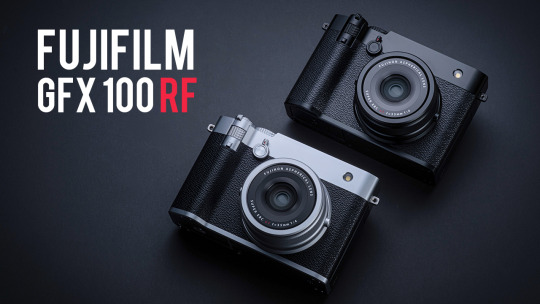
NEW VIDEO: https://youtu.be/3fUxxzRKcpY
The new Fujifilm GFX 100 RF is a 102-megapixel mirrorless camera with a fixed 35mm F4 lens. It has a rangefinder-style design, compact 735g body, 4K video and 9 separate aspect ratios. I go over all the specs, features, and everything to know about this new camera.
0 notes
Text
Check Out This Awesome Firearm Retailer
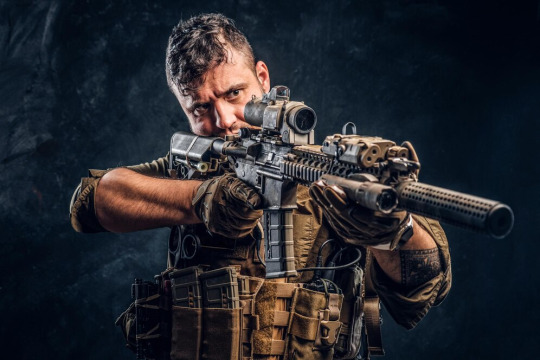
If you're a hunter, sport shooter, or outdoor enthusiast in the UK, finding the right retailer for firearms, optics, and accessories is essential. Whether you're after a high-performance rifle, a premium shotgun, or cutting-edge optics, R. Macleod & Son is the go-to destination.
Located in Tain, Scotland, this family-run business has built a reputation as a leading firerarm retailer, stocking hunting gear, firearms, and more. Their top-tier selection, expert advice, and commitment to quality make them a must-visit for UK buyers looking for the best hunting supplies.
In this blog, we’ll explore what makes R. Macleod & Son such a fantastic retailer, what they sell, and why their range is perfect for hunters and shooters.
Why R. Macleod & Son is a Hunting Supplies Hotspot
There are many firearm retailers in the UK, but few match the expertise and product range of R. Macleod & Son. Here’s what sets them apart:
✔️ Extensive selection of high-quality hunting rifles, shotguns, and air rifles. ✔️ A massive range of optics from top brands like Swarovski, Zeiss, and Leica. ✔️ Competitive pricing on firearms, ammunition, and accessories. ✔️ Expert customer service with personalized advice for hunters and sport shooters. ✔️ Decades of experience in the shooting industry, trusted by UK buyers.
Whether you're a deer stalker, game shooter, or target shooter, R. Macleod & Son has everything you need for a successful trip.
What They Sell: A Look at Their Impressive Range
1. Hunting Rifles – Precision for Every Shot
For hunters, a reliable and accurate rifle is a must. R. Macleod & Son stocks some of the best hunting rifles in the UK, with models suited for everything from deer stalking to long-range shooting.
🔹 Tikka – Known for exceptional accuracy and reliability. 🔹 Sako – High-quality Finnish rifles for serious hunters. 🔹 Blaser – Premium German-engineered rifles with quick barrel-changing systems. 🔹 Browning & Ruger – Durable, high-performance rifles at competitive prices.
🎯 Why It’s a Hotspot for Hunting Rifles: Their diverse range ensures every hunter finds the perfect rifle for their style and terrain.
2. Shotguns – Game & Clay Shooting Essentials
Whether you enjoy pheasant shooting, wildfowling, or clay pigeon shooting, R. Macleod & Son has a fantastic range of shotguns to choose from.
🔹 Beretta – Precision-made shotguns for game and sport shooting. 🔹 Browning – A long-standing favorite for British shooters. 🔹 Miroku – Renowned for their smooth handling and durability. 🔹 Winchester – A mix of classic and modern shotgun styles.
🦆 Why It’s a Hotspot for Shotguns: Whether you're a seasoned shooter or a beginner, they have shotguns suited to every skill level.
3. Air Rifles – Perfect for Pest Control & Target Shooting
For those looking for an alternative to firearms, air rifles provide excellent precision and control.
🔹 Weihrauch – High-quality German air rifles, perfect for pest control. 🔹 Air Arms – British-made air rifles, highly regarded for accuracy. 🔹 FX Airguns – Innovative and high-tech air rifles for precision shooters.
🎯 Why It’s a Hotspot for Air Rifles: Their range of premium air rifles makes them an ideal supplier for pest control and target shooting.
4. Optics & Scopes – See Your Target Clearly
No hunting setup is complete without a top-tier scope or binoculars. R. Macleod & Son stocks some of the best optics brands in the world, ensuring crystal-clear vision in all conditions.
🔭 Swarovski – Industry-leading glass for unmatched clarity and precision. 🔭 Zeiss – German-engineered optics, perfect for low-light conditions. 🔭 Schmidt & Bender – A favorite among long-range shooters. 🔭 Leica – High-end binoculars and rangefinders for tracking game with precision.
🌲 Why It’s a Hotspot for Optics: Top brands, expert advice, and models suited to every hunting environment.
5. Ammunition & Reloading Supplies – The Right Ammo for Every Hunt
R. Macleod & Son offers a wide selection of rifle, shotgun, and airgun ammunition, ensuring reliable performance for hunters and sport shooters.
🔹 Rifle Cartridges – Stocking Hornady, Federal, Sako, and Winchester. 🔹 Shotgun Shells – Game, clay, and pest control loads from Eley, Hull, and Gamebore. 🔹 Airgun Pellets – .177 and .22 caliber pellets for target and hunting use. 🔹 Reloading Supplies – Powders, primers, brass cases, and bullets for hand-loading.
💥 Why It’s a Hotspot for Ammo: They stock all the leading brands and offer great bulk deals for serious shooters.
6. Hunting Accessories – Everything You Need for the Field
Beyond firearms and optics, R. Macleod & Son offers an excellent range of hunting accessories, including:
✔️ Gun cases & safes – Secure storage solutions. ✔️ Hearing & eye protection – Safety gear for shooting sports. ✔️ Shooting clothing & footwear – Waterproof jackets, boots, and gloves for outdoor conditions. ✔️ Bipods, rangefinders & trail cameras – Essential tools for tracking game.
🎯 Why It’s a Hotspot for Accessories: They stock everything a hunter needs in one place!
Why UK Hunters Love R. Macleod & Son
✅ Best selection of hunting rifles, shotguns, and optics. ✅ Competitive pricing on firearms and accessories. ✅ Expert advice from a knowledgeable team. ✅ A trusted, family-run business with years of experience. ✅ One of the best-rated firearm retailers in the UK.
For UK buyers looking for the ultimate hunting supplies hotspot, R. Macleod & Son is the top choice.
Conclusion
Whether you’re in the market for a new rifle, a high-performance scope, or top-quality ammunition, R. Macleod & Son is a firearm retailer you don’t want to miss. Their wide range, expert staff, and unbeatable product selection make them a must-visit for hunters and shooters across the UK.
Click HERE for further reading.
0 notes